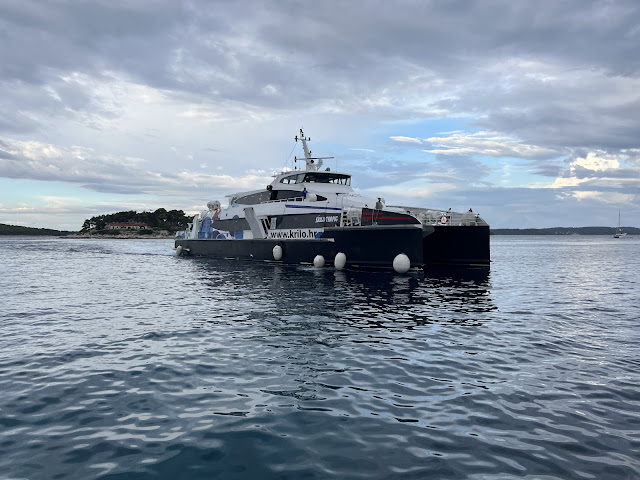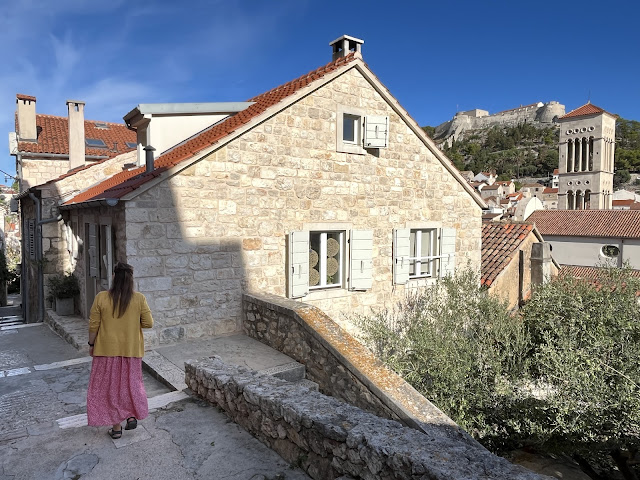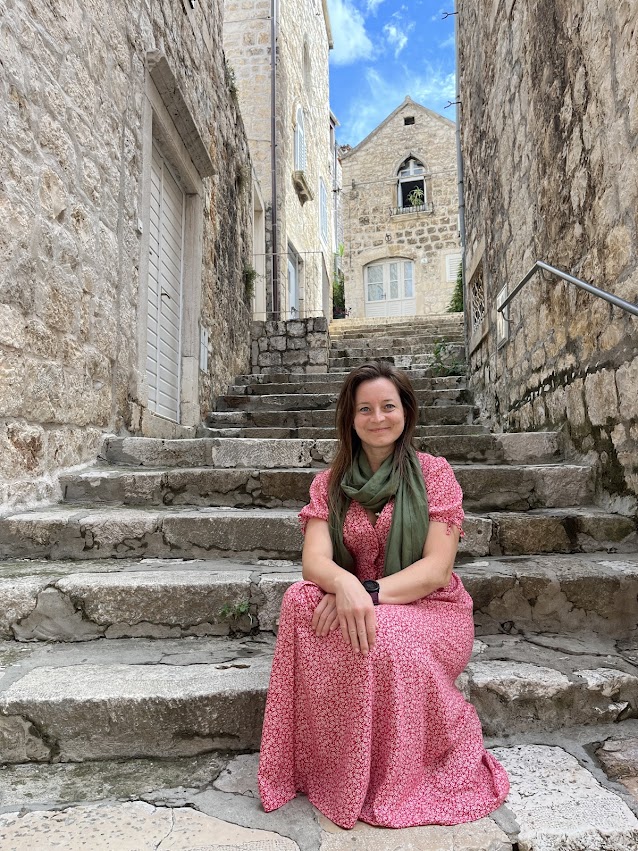Croatia. Hvar town
After a scenic ferry ride from Split, we arrived in Hvar just as the sun was setting. We spent three nights in this beautiful town, and each day felt like a journey through history, culture, and nature...
Map of the trip...
Ferry from Split...
In the morning we took our time to explore the streets of Hvar...
The narrow, cobblestone lanes are full of charm, lined with old stone buildings that seem to whisper stories of the past. As we wandered, we stumbled upon quaint cafés and hidden courtyards, perfect for a quiet moment of rest...
Our first stop was the Hvar Fortress (Fortica Španjola), which sits proudly above the town. The climb was worth every step, as the view from the top was nothing short of breathtaking. From up there, we could see the red-roofed town below, the Adriatic Sea stretching out into the horizon, and the Pakleni Islands scattered like jewels in the water.
This fortress dates back to the 13th century, and it's amazing to think how it has stood the test of time, offering protection and now providing visitors with incredible views...
Walking back down to the town...
Hvar Harbour is the vibrant heart of the town, where the crystal-clear waters of the Adriatic gently meet the stone quays. Lined with sleek yachts and traditional boats, it's a lively spot that reflects both the island's modern appeal and its maritime heritage...
The terrace of Hvar Theatre is a picturesque spot that blends history with beautiful views of the town. Overlooking the bustling harbor and Hvar’s main square, the terrace offers a serene escape with a touch of elegance. It’s the perfect place to take in the lively atmosphere below while being surrounded by the historical charm of the theater itself, which dates back to 1612. With the sea breeze gently flowing and the view of the yachts bobbing in the harbor, the terrace provides a unique vantage point to enjoy Hvar’s mix of cultural heritage and scenic beauty.
One of the highlights of our visit was the Hvar Theatre, which we were excited to see up close. Built in 1612, it's one of the oldest public theaters in Europe! It’s incredible to think that this place was once a gathering spot for everyone from local aristocrats to sailors passing through the port. Standing inside the theater felt like stepping back in time to an era when Hvar was a cultural hub in the Mediterranean.
The Franciscan Monastery in Hvar is a tranquil retreat, located right by the sea and surrounded by lush gardens. Built in the 15th century, the monastery is an important part of Hvar's cultural and religious history. Its most striking feature is the elegant bell tower, which rises above the terracotta rooftops, creating a picturesque view from the harbor.
The crystal-clear waters of the Adriatic...
Strolling through the streets of Hvar feels like stepping into a living postcard. The narrow, winding lanes are paved with smooth, centuries-old stone, and lined with charming, sun-bleached buildings draped in vibrant bougainvillea. Each turn reveals something new - whether it’s a hidden courtyard, a cozy café tucked into a corner, or a small artisan shop selling local lavender and handmade crafts...
We also visited Klocktornet, Hvar’s iconic clock tower that rises above the main square. It’s part of the historic St. Stephen’s Cathedral, and walking around it gave us another glimpse into the town's rich history. The bells from the clock tower have been marking time for centuries, and they reminded me how deeply rooted Hvar is in its past.
The tower of the Church of St. Mark in Hvar, though partially preserved, stands as a poignant reminder of the church’s former grandeur. It features Gothic and Renaissance design influences, with its tall, slender structure reaching towards the sky...
The stone tower is adorned with arched windows and decorative details typical of the period, though time and the elements have weathered its once sharp lines...
Despite its weathered condition, the tower still commands attention and provides a picturesque silhouette against the Hvar skyline. Its remnants speak of the church’s significance in Hvar’s religious and civic history, and it now serves as a silent witness to centuries of change. Even in its partially ruined state, the tower remains an integral part of the town’s architectural landscape, adding to the historical charm of Hvar.
In the evenings, we enjoyed leisurely walks through the town. There’s something special about Hvar after dark—the streets quiet down, the lights reflect off the stone buildings, and the sound of the sea gently fills the air. We loved strolling along the waterfront, watching the harbor come to life with lights from the boats and the soft hum of conversations from the nearby restaurants and bars.
Our three nights in Hvar were filled with moments of awe and relaxation. Between the history, the views, and the peaceful ambiance, it’s easy to see why Hvar is such a beloved destination. This island has a unique way of making you feel connected to both the past and the present.













































Comments
Post a Comment